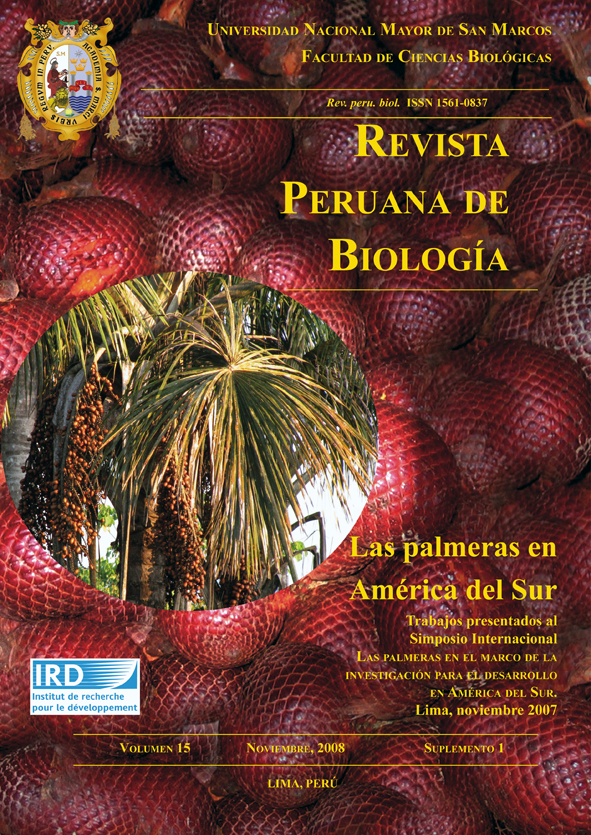Current status of the Palm collection (Arecaceae) of the Venezuelan National Herbarium (VEN)
DOI:
https://doi.org/10.15381/rpb.v15i3.3076Keywords:
Arecaceae, VEN Herbarium, palm collection, Venezuela.Abstract
The National Herbarium of Venezuela (VEN) has the largest collection of botanical specimens in the country,thus being the main source of reference for the flora of Venezuela. It also hosts a large number of specimensfrom other countries in the Neotropical region. The VEN contains approximately 400 000 specimens currentlyregistered in the herbarium’s database, of which 2192 form the palm (Arecaceae) collection that encompasses35 genera (including 5 foreign genera) and 127 specific and infraspecific taxa. The genera with the largestnumber of specimens are Geonoma (498) and Bactris (360), followed by Euterpe (158). The species Geonomadeversa (Poit.) Kunth contains the largest number of specimens in the collection (110). The herbarium hosts typematerial of 12 Arecaceae taxa: 4 holotypes, 1 lectotype, 5 isotypes and 2 isoneotypes. Most of the specimensat the VEN have been identified by specialists such as A. Henderson, F. Kahn, F. Stauffer and J. Wessels-Boer. A list of species found in the herbarium is presented herein. Review of specimen data at the VEN showthat palms have been collected mainly in the following states of Venezuela: Amazonas, Bolivar, Zulia, DeltaAmacuro, Aragua, Apure, and Distrito Capital. The main contribution to the collection of palms to the VEN isthe collections made by J. A. Steyermark and F. Stauffer.Downloads
Downloads
Published
Issue
Section
License
Copyright (c) 2008 Yaroslavi Espinoza Flores

This work is licensed under a Creative Commons Attribution-NonCommercial-ShareAlike 4.0 International License.
AUTHORS RETAIN THEIR RIGHTS:
a. Authors retain their trade mark rights and patent, and also on any process or procedure described in the article.
b. Authors retain their right to share, copy, distribute, perform and publicly communicate their article (eg, to place their article in an institutional repository or publish it in a book), with an acknowledgment of its initial publication in the Revista Peruana de Biologia.
c. Authors retain theirs right to make a subsequent publication of their work, to use the article or any part thereof (eg a compilation of his papers, lecture notes, thesis, or a book), always indicating its initial publication in the Revista Peruana de Biologia (the originator of the work, journal, volume, number and date).






